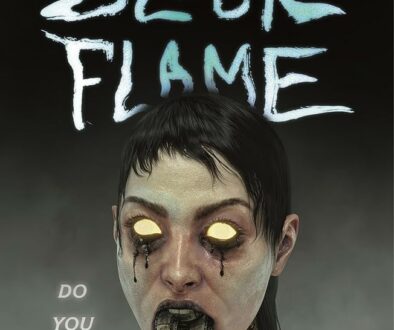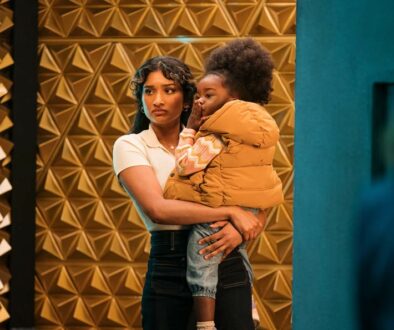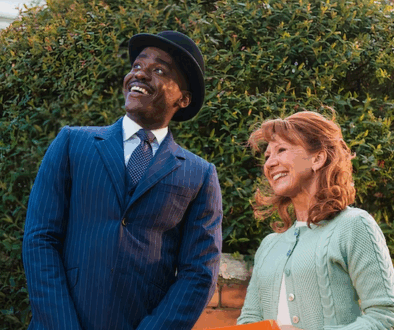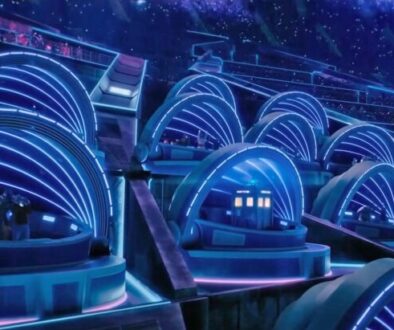Side Trip: Paradise Dungeons (2)
Hello once again, and welcome to the second sample chapter (the first chapter, if you missed it, is over here) of my proposed Wonder Woman project, Paradise Dungeons. Here we start to get at some of the intensely weird and deeply problematic stuff that makes Wonder Woman such a fascinating topic.
I’ve really loved writing both of these chapters, and really want to continue the project. But there are also limits to how much spec writing of one sort I can do. Simply put, there’s not a huge real book market for the sorts of things I do. People occasionally ask why I don’t shop TARDIS Eruditorum to a proper publisher, and the answer is simple – because nobody in their right minds is going to publish a ten volume set of Doctor Who criticism. Even Mad Norwegian caps out at six volumes. Paradise Dungeons is only shooting to be a one volume book, but it’s still a sprawling critical tome about the BDSM themes in Wonder Woman and their impact on feminism. I think it’s a great topic and I’m really excited to write it, but let’s face it – no publisher wants this book. (Please note – if you are a publisher and want this book, e-mail me.)
Which is to say, if you want to see more, head over to the project’s Kickstarter page and pledge some money. A $10 pledge gets you the book, and to be honest, I think that’s a pretty fair deal. And please, spread the word. Seriously. I need to start making some money off of this writing thing.
And we’ll be back again on Thursday with The Invisible Enemy. Oh dear.
Clay (1942)
The early years of any major comics character are always a bit unnerving to read. On the one hand, the early issues, almost inevitably, are where many of the iconic elements of the character are established, making them among the most influential and fundamental stories of the character. On the other hand, the nature of establishing the major tenets of what the character will be in turn means that over these stories, the character isn’t quite right yet. But with Wonder Woman all of this becomes even more complex because of how uncomfortable or inept many of the later creators are with the feminist and BDSM themes of the early days. The result is that the first year’s worth of Wonder Woman comics – the first twelve issues of Sensation Comics and the first two of Wonder Woman itself – are at once the purest and most complete statement of what the character is about and a sketchy, at times even clumsy, attempt at working out the character.
Let’s start with what is, to a modern reader, by far the most shocking aspect of these comics: Marston and Peter’s excessive fondness for extreme racial stereotypes. The horrifyingly racist depictions of the Japanese can at least be explained, if not excused, by the wartime climate. The minstrel-style black characters, stereotypical Mexicans, interchangeability of the deformed midget Japanese with all other East Asian nationalities, and villainous and treacherous Hawaiians, on the other hand, are much harder to explain without resorting to the uncomfortable but likely accurate truth that Marston and Peter held a host of racist prejudices and that their comics reflect these. (That said, the moment in Wonder Woman #1 in which, in a story with racist caricatures of both Mexicans and Japanese people, a car full of Japanese men crashes into a tree and Wonder Woman comments that they were too lazy to jump out is a sort of bizarre pinnacle of inept racism.)
This gets at a larger aspect of Wonder Woman in her original conception – her fundamental association with the United States of America. To some extent this is simply a cultural artifact: all World War II-era American superhero comics were unrelentingly patriotic and jingoistic. But this is a vague and unsatisfying explanation at best. After all, there are so many ways in which Marston and Peter are decisively breaking from the normal order of superhero comics, both in a storytelling sense and an ideological sense. The fact that strident and unwavering patriotism is one of the things that stays is significant.
This is doubly true given the extent to which Marston builds an entire theology out of pro-American ideology. In Wonder Woman #1, in which Marston retells and reworks the origin story he’d debuted in All-Star Comics #8 some six months previously, he presents the world as “ruled by rival gods – Ares, god of war, and Aphrodite, goddess of love and beauty.” In a move that should surprise nobody, Marston further associates men with Ares and women with Aphrodite. But in a move that is at least somewhat more surprising, the difference between the two deities is not their desire to conquer the world. The difference is that Ares specifically wants to conquer the world via force, whereas Aphrodite wants to conquer men with love.
It is in this context that we must read he later discussion between Ares and Aphrodite in which America specifically comes up. In it, Ares (now called Mars) boasts, “Ho! Ho! The whole world’s at war – I rule the Earth!” But Aphrodite responds, “your rule will end when America wins! And America will win! I’ll send an Amazon to help her!” Several things about this are worth pointing out explicitly. First of all, although it is a common enough way to refer to the country, the fact that Aphrodite specifically assigns a feminine pronoun to America. Second, however, is the fact that America is explicitly allied with Aphrodite here. The equating of the Axis Powers with Ares is sensible enough, but the equating of America with Aphrodite and with love is rather more surprising.
But this is consistent with the larger portrayal of America that we get over the course of these stories. Wonder Woman is reflexively patriotic, yes, but consistently in an unusual way. We already talked last chapter about how Steve Trevor is visibly a nod to Marvel’s Captain America, and how he is shown to need the help of the Amazons. Over the course of the first twelve issues of Sensation Comics and the first two of Wonder Woman this perspective gets steadily fleshed out. The American military is on the one hand unequivocally the good guys, but on the other is continually under threat from secret plots of various sorts. The most common plot hook by far is Steve Trevor being dispatched on a mission that is actually a trap laid by a Japanese or German villain.
In other words, although they’re the good guys, America is also shown, at least in its male-dominated and militaristic form, to be woefully inadequate, especially compared to the sneering and imposing menace of its enemies. But this begs the question of why Aphrodite considers America’s victory so important. From a properly detached perspective, of course, we know the answer: because Marston genuinely believed that American victory in World War II would create the conditions for the matriarchal society he wanted to see established. But this doesn’t explain how. And in this case, given that Marston was (as almost every utopian or revolutionary is) wrong about how imminent his desired revolution was, how Marston thought the revolution would play out is a very interesting question.
In this context it’s worth looking at Sensation Comics #1, in which Wonder Woman, the marquee character, arrives properly in Man’s World. After dropping Steve Trevor off at Walter Reed, her first instinct is to go clothes shopping, noting that “mother told me so much about styles of American women that I’m dying to see them.” This moment could be seized upon in order to point out how Wonder Woman is sexist, but doing so would be problematic in a raft of ways. First of all, we return to the basic issue of the material reality of feminism. The fact of the matter is that the fashion industry is a part of female-centric culture in America. Whatever sexist assumptions are bound up in that – and there are many – the fact remains that style and fashion is a clear signifier for women in American society.
Furthermore, although Sensation Comics is less-obviously marketed to buys than All-Star Comics was, and Wonder Woman at least makes the cover here, other than the female lead and the fact that its pirate strip, “Black Pirate,” features an unusually large number of shirtless men, there is little in the comic to suggest that it’s looking for a female audience. The remaining backup features – “Mr. Terrific,” “The Gay Ghost,” “Little Boy Blue,” and “Wildcat,” are all standard male-focused action strips, and the back cover advertisement for Daisy Air Rifles is second only to Charles Atlas in terms of its gendered appeal.
In which case the turn towards shopping and fashion must be taken, like the turn in All-Star Comics #8 from a story about a crashing American pilot to a love story, as a sort of active refusal to cater to the reader’s normal desires. Notably, the previous page of the comic ends with Wonder Woman refusing to fill in the doctors at Walter Reed and running off, leaving Trevor in their hands. Then the next page opens with her deciding to go shopping. In other words, Wonder Woman abandons the plot of the issue (and indeed, in the last panel, is running out the bottom right corner of the page, physically fleeing it in favor of what’s next) to go shopping – an active defiance of the narrative conventions the primarily male readers would expect. Taken in this light, what is interesting about her decision to go shopping is less that it is a stereotypically female pursuit and more that it is overtly not something the male reader is likely to be interested in.
The other thing that is interesting about this delay (which lasts five pages) is that Wonder Woman is deeply naive about the nature of the world. First we see various elderly folks whispering to one another about Wonder Woman, with the men ogling her and the women tittering about her state of undress. From there she prevents a robbery, mistaking the crooks shooting at her for a game of Bullets and Bracelets. Then, after outrunning a car seemingly for fun, she is hired by a smarmy theater booker to do tricks, raking in money as a performer before quitting to go back to helping Captain Trevor. This last point is particularly interesting given the more obvious theatrical role available for an attractive and scantily clad woman. The idea of the male gaze and the sexual objectification of women is implicit here, especially given that the one panel depicting Wonder Woman on stage is drawn with a set of applauding hands visible at the bottom of the panel, but no other aspects of the audience, giving, in that panel, a point of view that seems to be that of an audience member looking at their own hands as they applaud.
But, of course, Wonder Woman comes out on top. Her promoter attempts to steal all of the money she made, and she proceeds to calmly recoup her money from him before just as casually giving it all away in exchange for the credentials of a nurse outside the hospital (thus giving her a secret identity of Diana Prince). In other words, while Wonder Woman is ignorant of the workings of Man’s World, she is also extremely deft at living in it and is capable of thriving despite her naïveté.
Even though this sort of fish-out-of-water approach fades quickly from the stories, the basic dynamic it represents is fundamental to Wonder Woman. Because another way to look at this dynamic is that Wonder Woman, despite declining completely to operate by the rules of Man’s World, ends up being free and in complete control of herself and her destiny within it. Wonder Woman’s power within the world, in other words, extends from her refusal to be subject to it.
In this context we can also make sense of the other major recurring ally of Wonder Woman to be introduced in 1942, Etta Candy. More than almost any other character in Wonder Woman, Etta serves as a challenge to the norms of American superhero comics. A solidly plus-sized chocoholic, at first glance Etta seems like a crass stereotype of an overweight woman with an eating disorder. But as one reads on, a curious detail emerges. Or, rather, an expected detail fails to emerge. Nowhere in these fourteen issues are there any scenes in which Etta is humiliated, looked down on, or shown to be less than capable because of her weight.
Sure, her insistence on bringing candy wherever she goes is played for laughs regularly, but the tone is that of character-based humor about a character with an excessive fondness for chocolate, not as shameful gluttony. And yes, there are a few scenes in which Wonder Woman tries (and fails) to get Etta to go on a diet. But what’s more remarkable is the confidence with which Etta bats her concern away, including a delightful scene where Wonder Woman tries to persuade Etta to lose weight so she can get a man, and Etta points out that once you get a man there’s nothing to do with him, but you can eat candy. Indeed, given Wonder Woman’s own hopelessly fawning love of Steve Trevor, Etta’s level-headed refusal to change who she is to get a man makes her, in that regard at least, even more of a feminist icon than Wonder Woman herself.
Etta serves as the leader of the Beeta Lambda [sic] sorority at Holliday College, which serves to give Wonder Woman a convenient small army of female characters she can call on. This, in turn, helps establish Wonder Woman as a broader social force. She is not merely one strange woman but the de facto leader of a large group of women – indeed, of an entire generation of them. It is not coincidental that Wonder Woman’s allies are all college-age women – i.e. women of approximately the same age as the men fighting World War II. Wonder Woman is blatantly building an army via Beeta Lambda. But, of course, it is an army as only Marston would envision it. In their first appearance, Wonder Woman leads a group of a hundred Holliday girls to walk up to the soldiers holding Trevor captive, move to dance with them, and then surprise them by chaining them up. In other words, the sisters of Beeta Lambda don’t fight, they beguile and capture. This also gets at the other obvious use of the Beeta Lambda girls, which is that they can engage in acts of bondage and spanking and write it off as “sorority initiations.”
Ah, yes, bondage. We were going to have to come around to this point eventually, what with it being in the title of the book and all. It’s no secret that Wonder Woman has a lot of bondage and fetish themes in it. Her magic lasso (which she doesn’t even get until Sensation Comics #6, although the retelling of her origin in Wonder Woman #1 goes back and gives it to her from the start) is the most obvious example of this – a rope that forces whoever is bound with it to obey her. But more broadly, virtually every story involves at least Wonder Woman, and usually several other characters being tied up. Wonder Woman’s major weakness is that she loses her power if she is bound by her wrist cuffs by a man. And, of course, the girls of Beeta Lambda will take almost any excuse offered to bend someone over and begin paddling them.
This is probably the point to make the obligatory admission that Marston’s own sex life was non-standard – he lived with both his wife and his former student/research assistant, and had two children with each of them. The metal cuffs Wonder Woman wears were modeled off of ones worn by Olive Byrne, his research assistant And if you were to assume that his obvious philosophical and narrative interest in female domination carried over to his personal life, you would not be alone in the assumption. But this also means we should stress the degree to which Marston’s interest in bondage was not merely a physical fetish but a philosophical one.
This is made clearest in the story from Sensation Comics #11, in which Wonder Woman, Steve Trevor, and Etta Candy astrally project themselves to the land of Eros, in which being placed in a leadership position is considered a grave punishment and where imprisonment is a reward. For Marston, it is quite clear that bondage is valuable and of interest in a large part because it’s a symbol of the act of submission, which Marston values. (Though, crucially, it’s only submission to loving female authority that’s valuable – the Eros story in Sensation Comics #11 is in part a parable about how everything goes wrong when men start to do the enslaving instead of women because men don’t make slavery fun.)
The biggest problem with all of this is that it at times seems to blind Marston to more blatant problems in his stories. The most obvious example of this first batch of stories is Sensation Comics #9. On the one hand, this is a quite clever story in which a seemingly silly plot conceit from Sensation Comics #1 in which Wonder Woman buys the identity of a lookalike nurse comes back as the nurse returns and wants her job back. A series of plot contrivances leads to the nurse’s husband, Dan White, mistaking Wonder Woman for his wife and chaining her to the stove to prevent her from going and getting a job. But the story completely downplays this horrifying moment of domestic abuse, with Wonder Woman treating it as a joke and the story ending with the reconciliation of Dan and his wife, with Wonder Woman, just to make it all worse, noting that she envies the other Diana’s role as a wife and mother.
To a modern reader, it is difficult to make out what Marston could possibly be thinking here without concluding that he’s being horribly sexist. But this ignores the degree to which Wonder Woman’s entire world is defined by bondage. Simply put, in a Marston story chaining someone to the stove just isn’t as big a deal as it is in the real world. The only really odd thing about it, at least in the context of the rest of Wonder Woman, is the fact that the story is endorsing a man punishing and dominating a woman for being excessively independent. The really jarring part – the horrid abuse – just isn’t something that can be taken as all that abusive in a world as bondage-filled as Wonder Woman’s.
But this is a deeply awkward note to end on, since it comes uncomfortably close to saying that because there’s so much BDSM in Wonder Woman, we can’t take any given instance of BDSM seriously – a viewpoint that amounts to a wholesale endorsement of rape culture (a term we’ll discuss at more length later). But making that criticism misses a rather large point – it’s only 1941.
It is easy, seventy years later, to forget how far ahead of his time Marston is with these stories. He is, in essence, telling a story infused with the ideology of second-wave feminism and the BDSM community several decades before either of those things existed as historical institutions. In her first year, Wonder Woman remains a deeply problematic character. But in many ways, the stories of this first year would feel more at home in the 1960s than they do in the 1940s. Not in all ways – the horrifying racism being the most obvious problem. But in many ways. Under Marston, Wonder Woman has a confused and deeply tangled ideology full of contradictions and problems. Then again, there’s no such thing as a historical ideology without contradictions and problems (and given that all ideologies will eventually become historical ideologies, this fact has considerable consequences for the present).
And so we can at least say this – nothing else in 1942 had problems quite like Wonder Woman’s. Marston was screwing things up in ways that none of his contemporaries were even close to managing. Progress is often nothing more than a matter of making new mistakes. By that standard, Wonder Woman is a quantum leap forward.






November 30, 2011 @ 12:57 am
Hey there Phil – might be a good idea to include the first (repeated) chapter as a link, or a -more- tag, or something.
I got horribly confused, and worried that I wasn't getting an update, just a re-run.
November 30, 2011 @ 4:21 am
Ditto what 5tephe said.
Intriguing. I never really followed Wonder Woman all that much, although I did go back and check out Denny O'Neil's early 70's post superhero boom version that tried to reposition her as a kind of Emma Peel figure.
Have you ever read Carol Lay's Wonder Woman novel "Mythos"? I picked it up chiefly because I was a fan of her work and had had several email exchanges with her. It's interesting from the perspective that she was a female cartoonist who wasn't from a superhero background (She took the gig largely to try to break into prose.) and that she seemed to be channeling her frustrations with a frivolous husband (Ending in divorce.) into her depiction of a male mirror version of Amazon Island. It's a very post modern take on the character that could only have come from a woman.
P.S. I'm a professional artist, and if you'd ever be interested in trading one of your books for an illustration let me know.
November 30, 2011 @ 5:32 am
5tephe – Fair enough.
Steve – I haven't, but that sounds fascinating and I'll definitely check it out.
November 30, 2011 @ 5:36 am
I wonder whether you misunderstood 5tephe's comment? Do you realise you included the entire first chapter at the top of this second chapter?
November 30, 2011 @ 5:38 am
Huh. Well, that explains why the entry felt like it took an awfully long time to scroll past.
OK, now it's fixed then. 🙂
November 30, 2011 @ 5:44 am
"Her magic lasso … is the most obvious example of this – a rope that forces whoever is bound with it to obey her."
Given Marston's involvement with the development of the real-life lie detector, isn't the lasso's ability to make people tell the truth more central to its role?
November 30, 2011 @ 5:59 am
The lasso/lie detector connection is a commonly drawn one. At least at first, though, I think it's wrong – the lasso is introduced as a device to compel general obedience, not as one to compel honesty. She uses it for interrogation regularly, yes, but as introduced it's expressly a device of general dominance, not a lie detector analogue.
I'm not far enough through the reading to know if the development to the lie detector mode of operation happens under Marston or not.
November 30, 2011 @ 6:24 am
Not only has my only experience of Wonder Woman been the 1970s TV series (on first transmission in England), I've never even really tried to read comics (as opposed to reading the words and skipping the details of the pictures). However, I enjoy your writing, so I've signed up to kick you. I just hope that the PD project can get the BDSM out of your system before you reach Castrovalva.
I've popped into the local library and borrowed its one "Wonder Woman" volume – a collection of 1958-1959 strips – from the "Teenage" shelf. Also borrowed (from "Adult Non-Fiction") a glossy reproduction of the Bayeux Tapestry, for comparison. And so that the librarian didn't look down her nose too much.
November 30, 2011 @ 9:25 am
For Wm Keith: fyi, here are some pics/pages from the early issues that Philip is talking about:
http://www.thecomicbooks.com/img/1942-allstar8p58ww.gif
http://www.thecomicbooks.com/img/1942-allstar8p66ww.gif
http://www.thecomicbooks.com/img/1942-sensationcomics1.gif
http://i785.photobucket.com/albums/yy132/dcbloodlines/WonderWomaninSensationComics1aJanuary1942.jpg
http://new-wonder-woman.blogspot.com/2010/06/introducing-wonder-woman-december.html
Also, if your library has Jules Pfeiffer's Great Comic Book Heroes (the original edition with comics pages included, not the reissue with just Pfeiffer's text), that has the first or second WW story in it, IIRC.
November 30, 2011 @ 10:57 am
A ten-volume set? McGann doesn't get a whole book?
November 30, 2011 @ 11:27 am
Philip's prejudiced against half-humans.
November 30, 2011 @ 4:11 pm
I'm surprised you didn't put the racism of Wonder Woman comics in context with almost every other comic book (and newspaper comics, which were still HUGELY popular at this point) having racist caricatures, even as main characters. Ebony White, from The Spirit, is probably the best example for the overall era.
November 30, 2011 @ 9:05 pm
If you think that's bad, see what the Blackhawks' supposedly positive Asian sidekick looked like:
http://image2.milehighcomics.com/istore/images/fullsize/53806854089.41.GIF
http://image2.milehighcomics.com/istore/images/fullsize/53806854089.34.GIF
December 1, 2011 @ 12:10 am
Thanks, BerserkRL (to me you'll always be 7a1abfde-af0e-11e0-b72c-000bcdcb5194).
December 1, 2011 @ 3:28 am
Kickstarter is very limiting on who can give donations…only those within certain countries and only by credit card and not debit card, isn't it? You should maybe have a Paypal button as an alternative, maybe with a smaller donation to make up for not being able to give the book or get a refund if the total wanted isn't gotten….
December 2, 2011 @ 7:58 am
Have you seen this lunacy?
http://www.youtube.com/watch?v=VWiiXs2uU1k
December 7, 2011 @ 1:54 am
I love.
June 17, 2012 @ 1:11 am
I was just wondering have you considered putting your books up on other sites as well as Amazon? places like Lulu.com and such seem to be popular places and I don't think it costs you so it just seemed like the more places that people can run into your books the better and then if anyone was bothered by having to buy internationally that would solve that I think.
March 7, 2015 @ 4:30 am
sometimes toy gun is the reason of danger. we use the toy gun for having fun. but it's not great job. unfortunately you can fall in danger by using toy gun.
high powered air rifle
March 12, 2020 @ 7:25 am
This is the moment to pack your bags and discover the entire world since booking.com gives the discount offer. They are the spot of travelling agency.